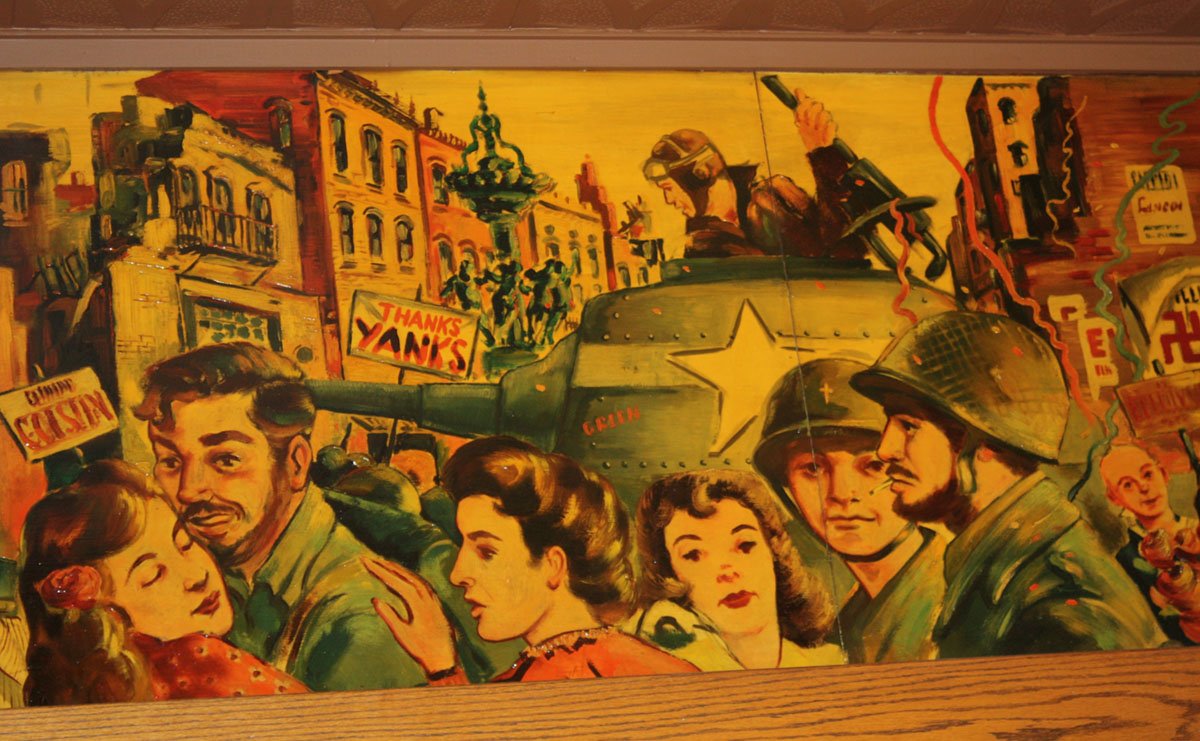15. Milano Inn Recalls Italian American Heritage, Favorite Restaurant, and End of World War II
James Glass
Column that appeared in the Indianapolis Star onThe recent announcement that Milano Inn would close at the end of 2016 has drawn attention to the rich history represented by the restaurant, in business at 231 S. College Avenue since 1934.
Irish Hill, located south of Washington Street and east of East Street, was a neighborhood for immigrants in the 19th and early 20th century. The Irish arrived first, to work on railroads being built in Indianapolis during the 1850s and 1860s. Next came Italians, Greeks, and others from the Mediterranean region. Two Italian families took up residence on S. Noble Street (now College) in the early 20th century: the Modaffaris and the LaGrottes. Two brothers, Joseph and Paul Modaffari, immigrated to the United States about 1914 from southern Italy. They found jobs at the United States Rubber Co. factory in Indianapolis and then enlisted in the U.S. Army during World War I. After the war, they opened a fruit and vegetable stand at the City Market. In 1934, the brothers and their wives, Nora and Mary, opened the Milano Inn at 231 S. Noble Street, featuring dishes from their home region in Italy. The restaurant originally occupied a single room in an 1870s, Italianate-style commercial building. The Modaffaris lived for a time in apartments above their business. As the Milano Inn prospered, the proprietors expanded the dining room into the building next door. Nora and Mary Modaffari worked in the kitchen until 1948, and then became hostesses.
After World War II, the Modaffari Brothers noticed the artwork of a young Marine from Indianapolis, recently discharged after service in the Pacific War. Donald A. Peters, without formal art training, had won accolades for his vivid sketches of combat scenes in the Pacific. Some of sketches were published in newspapers across the country in 1945, including the Indianapolis Star. After the war, Peters entered the John Herron School of Art in his home town, and the Modaffaris offered him room and board in exchange for painting a mural in their main dining room. The subject of the mural was to be the liberation of Italy in May, 1945 by American soldiers and sailors. Peters lived in an apartment above Milano Inn during the summer of 1947 and worked on a series of vivid scenes that extended as a frieze around the perimeter of the south dining room. Although he may not have been in Italy during the celebration, Peters produced through his art an evocative glimpse of that moment, with GIs guarding defeated Germans, being kissed and hugged by Italian girls, celebrating in the streets, attending a burlesque show, and exploring the sights in Rome. On one panel, Peters worked in a sign with the words “Milano Inn.” The artist later found success as an animator for Disney and other Hollywood studios, as a background artist for movies, and as a screen writer.
The LaGrotte family patriarch, Angelo, opened a grocery just north of Milano Inn after World War II. In the early years, the large LaGrotte family lived in an apartment building across the street. After the death of Paul Modaffari in 1964, members of his family continued to operate Milano Inn until 1980, when they sold the property to Leo LaGrotte, one of Angelo’s sons. Leo made a major investment in renovating the interior and expanding the dining areas. Some of the original Modaffari recipes were retained, while many new Italian dishes were added. When Leo LaGrotte died in 2007, his two daughters, Tina and Gina, took over management of Milano Inn and operated it successfully until they decided to sell. Tina LaGrotte says that she hopes that a restaurant will continue in the building and that the unique mural of Donald Peters can be preserved.

Milano Inn, 2016. James Glass

Detail—Liberation of Italy mural by Donald Peters, 2016. James Glass
